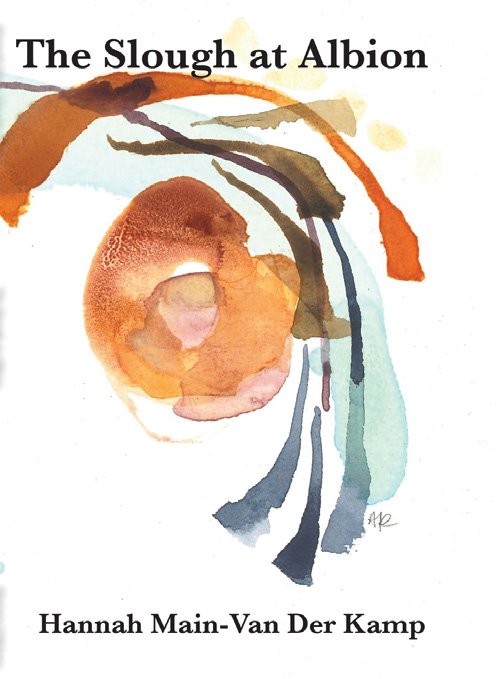The Slough at Albion by Hannah Main-Van Der Kamp
The Slough at Albion
by Hannah Main-Van Der Kamp
Ekstasis, 2024; 130 pages; $24.95
Reviewed by Trevor Carolan
Hannah Main-van der Kamp writes from the Powell River area with a nature-literate voice that feels immediately familiar. Her west coast-flavoured poems are flecked with concerns for effective land use, community, the wiles of gardening, and contending with the challenges of change in the place she knows as home. There’s emotion in there too and the searching of a poet in the face of a “universal virus of discontent” that’s become a generational condition. However, like Susan Musgrave, another up-coast literary observer who writes about daily experience with a disciplined eye despite shifting social and political weathers, Main-van der Kamp reports from her “compass of wakefulness.” These are compassionate poems, the work of a mechanic at ease with her tools.
From the title, one might mistakenly imagine the collection will address the small community across the Fraser River from Fort Langley. For more than fifty years the Albion ferry plied the channel until the Golden Ears bridge made it redundant in 2009. Urban growth will do that. Ironically, the book’s first poem, “It Could Have been Worse” speaks to this very subject: a wild corner lot near a slough with its “huckleberry shrubs / one storey high on first-growth stumps, salal / sweeping the road alongside alder, cascara and bird cherry,” awaits sub-division for new homes. Unspoken here is the millennial drift northward from Vancouver bringing in newcomers searching for small-town homes they can afford. As bumper sticker logic declares, Change Happens: “pack up the day / pray and pick up shadows.”
In “Hallowe’en” new shadows appear as different customs. These days, trick-or-treat kids go for the easy doors, pass by aging walk-up driveways with traditional home-carved spooky pumpkins. Instead of hand-outs to kids that already have plenty, it’s the poet’s old emotions that end up being recollected in the way the old Albion Slough is remembered
Main-van der Kamp incorporates images from her bird-viewing and painterly interests that offer a fresh breeze throughout the book. Pine Siskins, Marsh Wrens, bushtits, and Juncos join encounters with bear, deer, sword ferns, and the haunting Mourning Cloak butterfly. Each comes freighted with descriptive imagery that thickens the poet’s verbal canvas like an impasto, shaping portraits from beyond the reach of city life. Similarly, in “Horticultural Colour Theory” glimpses of her watercolour skill point to the manner in which gardeners may find harmony even in dissimilars, for the “rule of painters’ thumb” can place loud complementary colours side by side to pleasing effect.
Three poems on the vulnerability of marriage provide a meditation on the nature of marital disintegration. Exhausted by doubt, by “long nights… long staring at black windows / long silences. . .” the way in which estrangement grows comes “as in a brushstroke lesson.” Yet, if gardeners can dig and turn the soil in wishing for regeneration, blunt truth can still jolt. “It was / past the last day for swimming,” she relates. “. . . It was the last day of our marriage. / That was not the first time / we thought that. Close up, the dogwoods showed / their scarred fruits... Shall we brave it? Yes no. Twin possibilities about / which the black and blue jays constantly argued.”
Yoga, religious faith, and references to Albion Creek and Slough are recurrent spiritual and environmental themes throughout this book, along with its awareness of transience, of mortality. “Hope,” the poet maintains, “is a state of being / a way of living not dependent on results.” And it’s a way of “making things happen,” she insists, an otherness “that cannot be captured.” In uncertain times it is nature’s grace, we are quietly assured, that does not fail.

